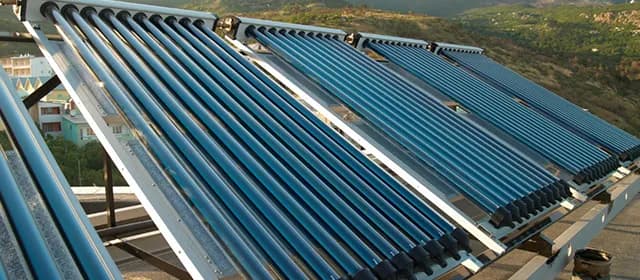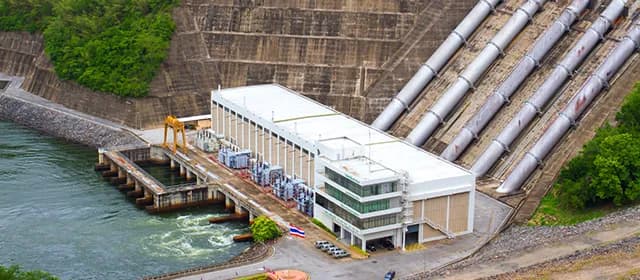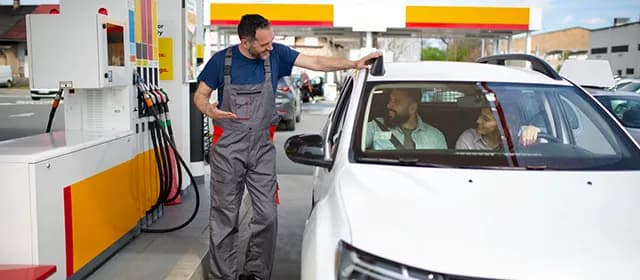Have you ever wondered about a power generation solution that can swiftly respond to emergencies, power remote locations, and adapt to dynamic energy needs? The answer lies in a mobile power plant, a remarkable innovation in the field of energy generation. In an era where flexibility and rapid deployment are paramount, these power plants have emerged as a versatile and indispensable tool.
This blog explores all you need to know about this solution, delving into its components, applications, and the evolving environmental considerations that shape its role in the ever-changing energy landscape.
What is a Mobile Power Plant?
A mobile power plant refers to a compact and movable system designed to generate electricity while on the move. Unlike conventional fixed power plants, these power plants can be conveniently transported and set up in different locations, granting them flexibility and adaptability for diverse situations. These units generally consist of power generation machinery, fuel supplies, and mobility functions, enabling them to supply electricity in remote regions, during emergencies, or at temporary gatherings.
Importance of Mobility in Power Generation
In dynamic environments, it is vital to have the ability to generate power on the go to meet various energy requirements. Mobile power plants are essential in situations where a fixed infrastructure is not feasible or accessible. They serve as a quick solution in emergencies, providing immediate power to areas or events affected by disasters.
Moreover, the capability to move power production facilities improves the flexibility for fulfilling energy requirements in isolated areas or temporary undertakings like construction sites. The significance of mobile power generation lies in its ability to deliver electricity to areas that require it the most, guaranteeing resilience, adaptability, and effective energy allocation in diverse situations. As per the estimations by Kings Research, the mobile power plant market will record a valuation of $2.37 billion by 2030.
Components of a Mobile Power Plant
Power Generation Unit:
- Engine/Generator: The core component responsible for electricity generation.
- Fuel System: Provides the necessary fuel (e.g., diesel, natural gas) to the engine.
- Exhaust System: Manages and expels combustion byproducts.
Mobility Features and Technology:
- Trailer or Vehicle: The mobile platform that houses the power generation unit.
- Mobility System: Wheels, axles, or other mechanisms for transportation.
- Hitch: Connects the mobile power plant to a towing vehicle.
Control and Monitoring Systems:
- Control Panel: Interface for starting, stopping, and regulating the power plant.
- Monitoring Sensors: Devices to measure and report on various parameters (e.g., temperature, fuel levels).
- Communication Systems: Allow for remote monitoring and control.
Fuel Storage:
- Tanks or containers to store the fuel required for power generation.
Cooling System:
- Radiators or cooling systems to maintain optimal temperatures during operation.
Electrical Distribution System:
- Transformers, switchgear, and distribution panels to manage and distribute the generated electricity.
Auxiliary Systems:
- Battery System: Stores energy for starting the power plant and provides backup power.
- Lighting: Illuminates the area around the mobile power plant.
- Safety Features: Fire suppression systems, emergency shutdown mechanisms, etc.
Advantages of Mobile Power Plants
Mobile power plants provide numerous benefits that make them a preferred solution in a variety of situations. Their ability to move quickly enables them to be swiftly deployed in emergency scenarios, ensuring a dependable power supply during times of natural disasters or grid outages.
Furthermore, these devices are capable of serving remote regions or construction sites where establishing a permanent power grid is not feasible. The ability to move the source of power generation also enhances effectiveness in temporary events and undertakings.
Additionally, portable energy facilities frequently feature adaptable structures that allow for scalability to meet precise energy requirements. Additionally, their compact nature enhances mobility, thereby minimizing logistical difficulties typically associated with conventional fixed power facilities.
Applications of a Mobile Power Plant
-
Emergency Power Supply:
Mobile power plants are frequently utilized during emergency circumstances to offer expedient and dependable electricity supply in cases of power disruptions triggered by unexpected situations such as natural calamities, accidents, or unforeseen incidents.
-
Remote Areas and Off-Grid Locations:
These power plants are a viable solution in regions where setting up a conventional electrical grid is impractical or too expensive. These power plants can be easily transported to remote areas to fulfill temporary electricity requirements.
-
Temporary Events:
Mobile power plants are frequently utilized in situations that demand a temporary and movable source of energy, such as concerts, festivals, or outdoor gatherings. It is a common solution for providing power in such scenarios.
-
Construction Sites:
Temporary power is often needed at different stages of construction projects. Construction sites can benefit from the presence of these power plants, which can supply the required electricity for tools, machinery, and other construction requirements.
-
Military Operations:
Mobile power plants in military applications provide a valuable strategic benefit by delivering immediate and localized power to support a wide range of equipment and facilities in field operations.
What Regulations Cover the Safety Standards of Mobile Power Plants?
The safety regulations and standards that govern mobile power plants aim to ensure the safe operation and management of these facilities. Although the specific regulations may differ depending on the region and type of power generation, some general principles and standards are universally applicable to ensure safety and compliance, including:
- Regulatory Oversight
Regulatory authorities, such as the Environmental Protection Agency (EPA) and sector-specific regulatory bodies, are pivotal in setting and implementing safety regulations for portable power plants. The primary objective of these regulations is to mitigate risks and guarantee the secure functioning of power generation facilities.
- Industry-Specific Standards
Various forms of power generation facilities, such as nuclear power plants and electric power generation facilities, are obligated to abide by safety standards that are specific to their respective industries. For instance, nuclear power plants adhere to internationally recognized safety measures that aim to enhance the overall safety of these facilities, as endorsed by the International Atomic Energy Agency (IAEA).
- Work Equipment Regulations
The regulations such as the Provision and Use of Work Equipment Regulations (PUWER) focus on ensuring workplace safety by outlining the necessary measures for providing and utilizing equipment. These regulations govern the suitability, safety, and operation of all equipment used in the workplace, emphasizing the need for properly trained personnel. They establish specific health and safety requirements for different types of equipment, which must be effectively managed by the individual responsible.
Bottom Line
The world of mobile power plants unfolds as a dynamic and essential facet of modern energy solutions. From providing swift responses in emergencies to meeting power needs in remote areas, these units showcase adaptability and versatility. While they come with their set of challenges, technological advancements continue to address limitations and enhance efficiency. As we navigate the future of energy, these power plants stand poised as a crucial player, offering flexibility, reliability, and a transformative impact on how we generate and distribute power.




